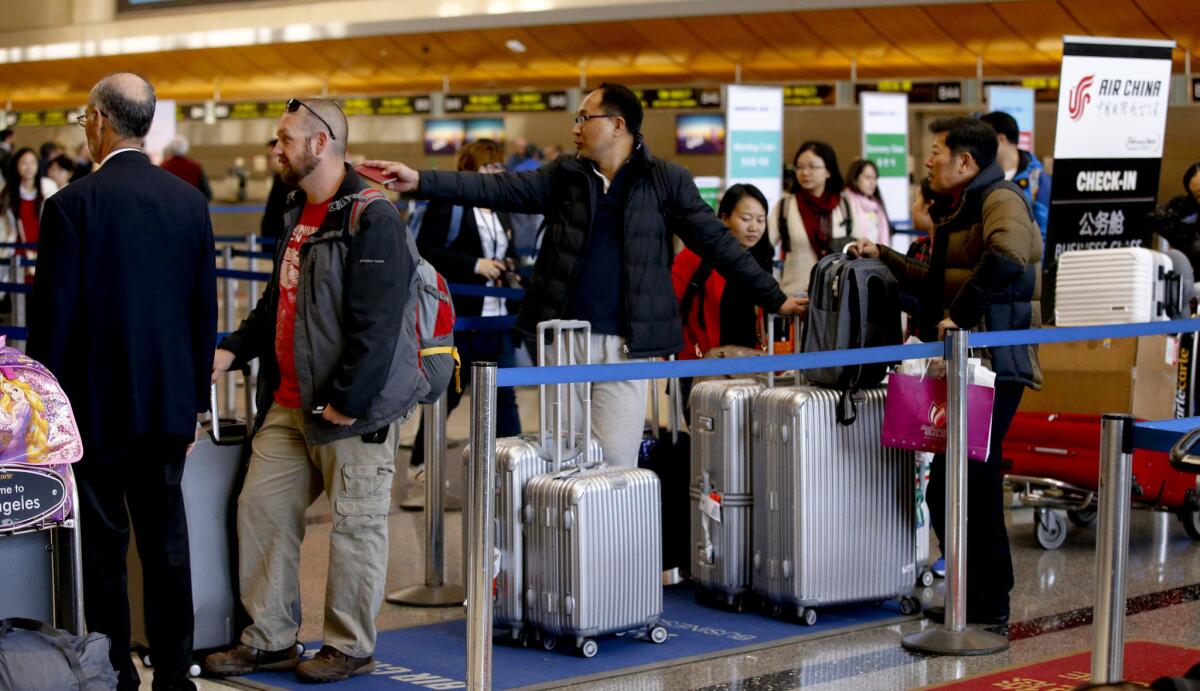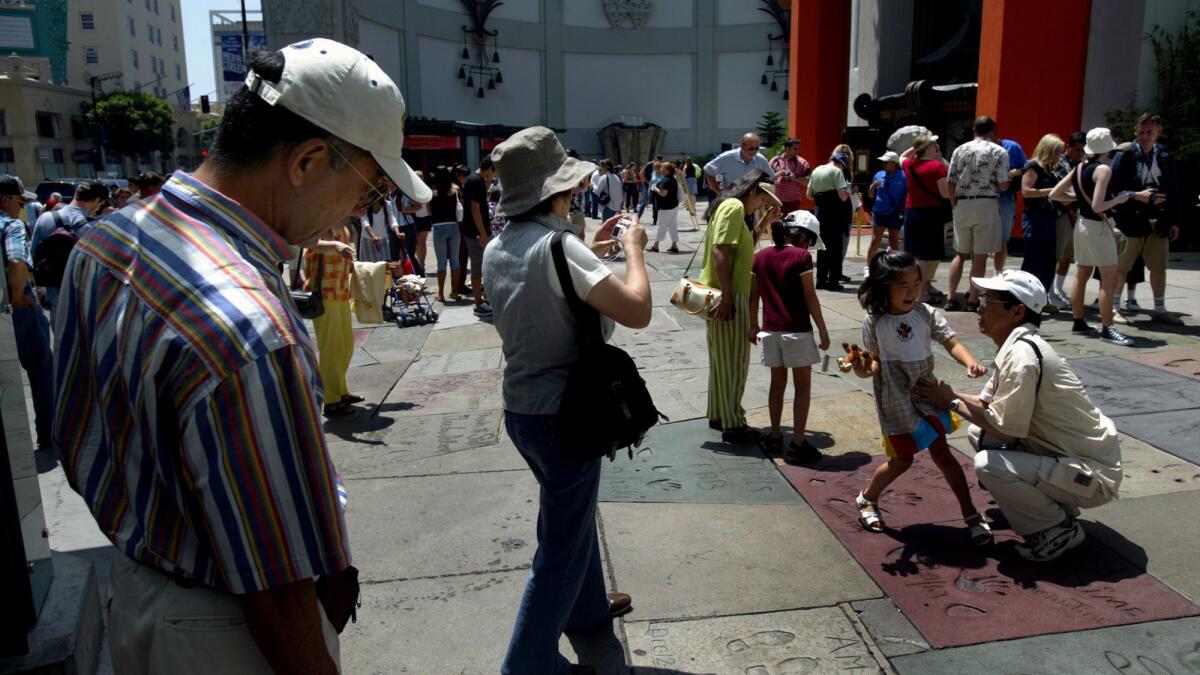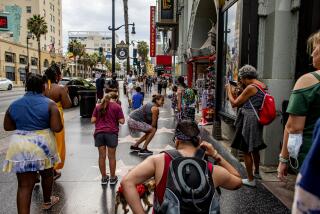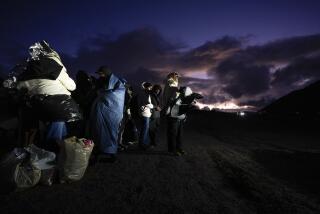To draw more foreign visitors to U.S., Visa Waiver Program may get tougher-sounding name

- Share via
In hopes of convincing lawmakers to allow more foreign visitors into the U.S., top tourism officials are turning to a marketing tactic more common in the business world: a rebrand.
The nation’s Visa Waiver Program now allows travelers from 38 countries to visit the U.S. without visas. But tourism officials worry that security concerns may keep lawmakers from expanding the program to add more countries.
And so the trade group for the nation’s travel industry is pushing a new tougher-sounding name: the Security Travel Partnership.
“A lot of folks see the word ‘waiver’ and think of an overzealous third-base coach waving folks into the country,” said Jonathan Grella, executive vice president at the U.S. Travel Assn.
To pull off the rebrand, the trade group is trying to get bipartisan support from lawmakers in Washington, D.C., to rename the program and expand it to include nine new countries, including Poland, Argentina, Israel and Brazil.
“We hope rebranding can give us a fresh start to allow the program to be reconsidered on its merits,” Grella said.
The rebranding plan is part of a bigger tourism-boosting effort among travel and tourism leaders who say that the U.S. is slowly losing its position as the most popular destination for international tourists.
A strong U.S. dollar, economic turmoil in Europe, trade tensions in China and harsh anti-immigrant rhetoric by President Trump have all been blamed by tourism leaders for putting a chill on what was a dramatic surge in foreign visitors to the U.S. starting in 2010.
Although international travel grew 6% worldwide last year, international travel to the U.S. rose only 2%, with the flow of visitors from China remaining flat compared with the previous year, while trips from Germany to the U.S. dropped 7% in 2018, according to statistics released Tuesday by the World Travel & Tourism Council, a London-based nonprofit that researches and promotes tourism.
Ernest Wooden, chief executive of the Los Angeles Tourism and Convention Board, said his group is focusing on attracting travelers from India and South Korea with the help of online ads that feature Korean actor Daniel Henney and Indian actresses Malaika Arora and Sonam Kapoor.
“Attracting international travelers continues to be a top priority for the Los Angeles tourism industry as these travelers typically stay in the destination longer and spend more while here,” he said.

Foreign travelers are highly sought after by tourism officials because they spend up to four times more per visit than a tourist from within the U.S.
But if current travel trends continue, China may surpass the U.S. as the world’s biggest travel economy within the next decade, according to the council.
Travel and tourism contributed an estimated $1.6 trillion to the U.S. economy last year, compared with $1.5 trillion generated for the Chinese economy, according to the council.
By 2030, travel and tourism is expected to pour $3 trillion into the Chinese economy, thanks to a burgeoning middle class that is expected to travel heavily within and outside of the country. The U.S. is expected to benefit from $2 trillion in travel and tourism spending by 2030, the council said.
Even if Washington lawmakers agree to expand the Visa Waiver Program — under whatever name — the program mandates that the country sending travelers to the U.S. must adopt several tough security measures, such as including a digital chip in each passport with biometric information about the traveler.
Expansion of the program seemed to have the support of President Trump, who met with top tourism officials in September, Grella said. At that same meeting, he said, tourism leaders urged Trump to either tone down his anti-immigrant rhetoric or at least make it clear that the U.S. still welcomes international tourists.
“A lot of people who are curious and interested and desirous of coming to the U.S. may not feel we are welcoming enough to them,” Grella said.
Tourism leaders are also pushing lawmakers to refund Brand USA, a promotional tourism campaign launched in 2011 that is funded by private donations and fees charged to international visitors who register for visas to enter the United States. Funding for the program was diverted to the general fund last year; supporters hope its funding will be renewed next year.
To push their message to Trump, the U.S. Travel Assn. plans an extremely specialized marketing campaign with billboards that tout the U.S. as a welcoming travel destination to foreign tourists. The campaign, to launch this week, will be exclusive to West Palm Beach, Fla., home of Trump’s favorite vacation spot, the swanky Mar-a-Lago resort.
Twitter: @hugomartin
More to Read
Inside the business of entertainment
The Wide Shot brings you news, analysis and insights on everything from streaming wars to production — and what it all means for the future.
You may occasionally receive promotional content from the Los Angeles Times.











